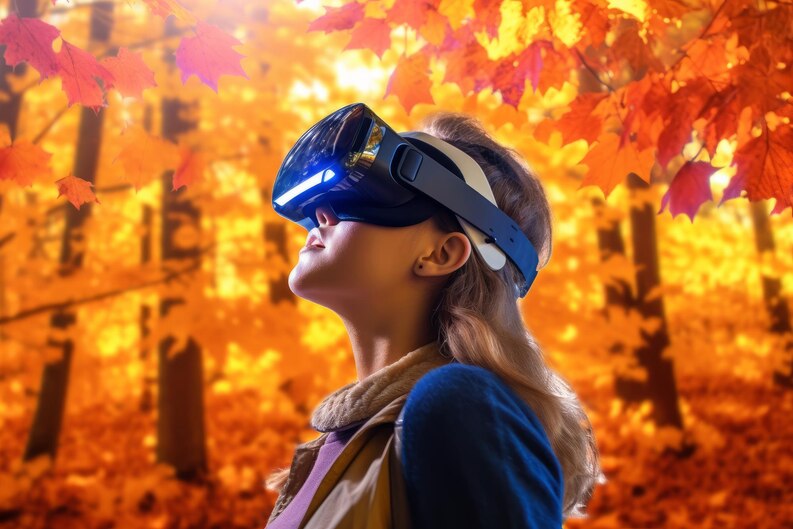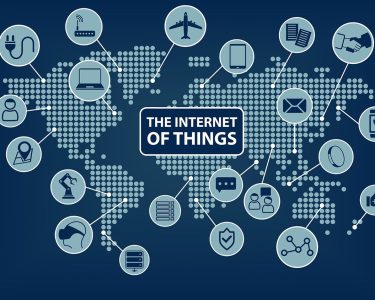Generative AI and VR: How They Shape the Future
Learn how generative AI and VR can create immersive and innovative experiences that transform reality and unleash new possibilities.
Introduction
Hello, my name is Fred and I am a futurist and VR content creator. I am passionate about exploring the potential of generative AI and VR, two technologies that are revolutionizing the way we create and experience content. In this article, I will share with you some of the basics of generative AI and VR, how they can work together, and how to get started with them. Whether you are a curious learner, a creative maker, or an early adopter, I hope you will find this article informative and inspiring.
What is Generative AI?
Generative AI is a type of artificial intelligence that can learn from and mimic large amounts of data to create new content, such as text, images, music, video, and code. Generative AI works by using a machine learning (ML) model to learn the patterns and relationships in a dataset of human-created content. It then uses the learned patterns to generate new content that is similar to or different from the original data.
Some examples of generative AI models and modalities are:
- Text: GPT-3, ChatGPT, Bard, and LLaMA are large language models that can generate natural language text based on prompts or queries. For example, you can ask GPT-3 to write a poem, a story, a tweet, or a code snippet.
- Images: Stable Diffusion, Midjourney, and DALL-E are text-to-image models that can generate realistic or surreal images based on natural language descriptions. For example, you can ask DALL-E to draw a picture of a cat wearing a hat, a pineapple pizza, or a skyscraper made of glass.
- Music: Jukebox, MuseNet, and OpenAI Codex are music generation models that can create original songs or melodies based on genres, artists, or lyrics. For example, you can ask Jukebox to compose a song in the style of Taylor Swift, MuseNet to play a piano piece in the style of Mozart, or OpenAI Codex to write a rap song based on a topic.
- Video: Deepfake, First Order Motion Model, and Neural Style Transfer are video generation models that can manipulate or synthesize video content based on faces, motions, or styles. For example, you can use Deepfake to swap faces between two people, First Order Motion Model to animate a still image, or Neural Style Transfer to apply an artistic style to a video.
- Code: GitHub Copilot, Codex, and GPT-3 are code generation models that can write or complete code based on natural language comments or specifications. For example, you can use GitHub Copilot to suggest code snippets for your project, Codex to create a web app based on a description, or GPT-3 to generate a game based on a theme.
The benefits of generative AI are:
- It can enhance creativity and innovation by producing novel and diverse content that can inspire or entertain us.
- It can improve productivity and efficiency by automating or assisting with repetitive or tedious tasks that can save us time or effort.
- It can enable personalization and customization by generating content that suits individual preferences or needs that can satisfy or delight us.
The challenges of generative AI are:
- It can pose ethical and social risks by creating fake or misleading content that can deceive or manipulate us.
- It can raise legal and intellectual property issues by infringing on the rights or interests of the original content creators or owners.
- It can require high computational and data resources by relying on large and complex models and datasets.
What is VR?
VR is a technology that creates a simulated environment that immerses the user in a virtual world. VR works by using a headset and motion-tracking technology that tracks the user’s head and body movements and displays a corresponding view of the virtual world.
Some examples of VR headsets and platforms are:
- Meta Quest 3: A standalone VR headset that does not require a PC or console to run. It has a high-resolution display, a powerful processor, and color pass-through cameras that enable mixed-reality experiences.
- PlayStation VR2: A tethered VR headset that requires a PlayStation 5 console to run. It has a 4K OLED display, built-in tracking cameras, eye tracking, and two tactile Sense controllers with adaptive triggers and haptic feedback.
- HTC Vive Pro 2: A tethered VR headset that requires a PC to run. It has a high-resolution display, a wide field of view, and a modular design that supports various accessories and peripherals.
- Valve Index: A tethered VR headset that requires a PC to run. It has a high-refresh-rate display, a large field of view, and a pair of Knuckles controllers that offer finger tracking and force sensing.
The benefits of VR are:
- It can provide immersive and realistic experiences that enhance the sense of presence and engagement.
- It can offer interactive and dynamic experiences that respond to the user’s actions and choices.
- It can enable exploration and discovery of new or inaccessible worlds and scenarios.
The challenges of VR are:
- It can cause physical and psychological discomfort such as motion sickness, eye strain, or dissociation.
- It can require high hardware and software requirements by demanding high-performance and compatibility.
- It can face limited content and adoption by lacking diverse and quality content and reaching a wide and mainstream audience.
How Generative AI and VR Can Work Together?
Generative AI and VR can complement each other and create immersive and innovative experiences that transform reality and unleash new possibilities. Generative AI can provide VR with content, interaction, and adaptation. VR can provide generative AI with visualization, evaluation, and inspiration.
Generative AI can provide VR with:
- Content: Generative AI can create new and diverse content for VR, such as environments, characters, objects, sounds, or stories. For example, generative AI can create a virtual world based on a text description, a virtual character based on a face image, a virtual object based on a sketch, a virtual sound based on a genre, or a virtual story based on a theme.
- Interaction: Generative AI can enable natural and intuitive interaction for VR, such as voice, gesture, or emotion recognition and generation. For example, generative AI can recognize the user’s voice, gesture, or emotion and generate a corresponding response, such as a dialogue, an action, or a feedback.
- Adaptation: Generative AI can enable personalized and customized adaptation for VR, such as content generation or modification based on user preferences or feedback. For example, generative AI can generate or modify the virtual content based on the user’s likes, dislikes, or suggestions, such as changing the color, shape, or style of the virtual content.
VR can provide generative AI with:
- Visualization: VR can provide realistic and immersive visualization for generative AI, such as displaying generated content in 3D and 360 degrees. For example, VR can display the generated content in a way that the user can see, hear, touch, or feel the virtual content, such as viewing a painting, listening to a song, holding an object, or feeling an emotion.
- Evaluation: VR can provide interactive and dynamic evaluation for generative AI, such as testing and improving generated content based on user actions and responses. For example, VR can test the quality, accuracy, or relevance of the generated content by allowing the user to interact with, rate, or comment on the virtual content, such as playing a game, answering a question, or giving a feedback.
- Inspiration: VR can provide novel and diverse inspiration for generative AI, such as generating content based on VR experiences or scenarios. For example, VR can inspire generative AI to create new content based on what the user sees, hears, does, or feels in the virtual world, such as creating a poem, a picture, a melody, or a code.
Some examples of generative AI and VR applications are:
- Art: Generative AI and VR can create and display artistic content, such as paintings, sculptures, or music, that can be viewed or interacted with in VR. For example, you can use generative AI to create a virtual painting based on your mood, and then use VR to see and touch the painting in a virtual gallery.
- Education: Generative AI and VR can create and deliver educational content, such as lectures, simulations, or games, that can be learned or practiced in VR. For example, you can use generative AI to create a virtual lecture based on your topic, and then use VR to listen and ask questions in a virtual classroom.
- Entertainment: Generative AI and VR can create and provide entertainment content, such as movies, shows, or concerts, that can be watched or participated in VR. For example, you can use generative AI to create a virtual movie based on your genre, and then use VR to watch and react to the movie in a virtual cinema.
- Gaming: Generative AI and VR can create and offer gaming content, such as levels, enemies, or items, that can be played or explored in VR. For example, you can use generative AI to create a virtual level based on your difficulty, and then use VR to play and enjoy the level in a virtual game.
- Healthcare: Generative AI and VR can create and support healthcare content, such as diagnosis, treatment, or therapy, that can be performed or experienced in VR. For example, you can use generative AI to create a virtual diagnosis based on your symptoms, and then use VR to receive and follow the diagnosis in a virtual clinic.
- Social: Generative AI and VR can create and facilitate social content, such as avatars, expressions, or conversations, that can be communicated or shared in VR. For example, you can use generative AI to create a virtual avatar based on your avatar, and then use VR to chat and socialize with your friends in a virtual space.
How to Get Started with Generative AI and VR?
If you are interested in getting started with generative AI and VR, here are some practical advice, tips, or solutions that can help you learn and create generative AI and VR content.
- Resources: To learn more about generative AI and VR, you can check out some online courses, books, blogs, podcasts, or videos that cover the basics, concepts, techniques, and trends of generative AI and VR. For example, you can try:
- Coursera: Generative Adversarial Networks (GANs) Specialization: A series of courses that teach you how to build and train generative AI models using GANs, a type of neural network that can generate realistic images, videos, and audio.
- Udemy: Virtual Reality and Augmented Reality with Unity: A course that teaches you how to create VR and AR applications using Unity, a popular game engine that supports various VR and AR platforms and devices.
- Book: Generative Deep Learning: Teaching Machines to Paint, Write, Compose, and Play: A book that teaches you how to use deep learning to generate various types of content, such as images, text, music, and code, using Python and TensorFlow.
- Book: Learning Virtual Reality: Developing Immersive Experiences and Applications for Desktop, Web, and Mobile: A book that teaches you how to use web technologies, such as HTML, CSS, JavaScript, and WebGL, to create VR experiences and applications that run on various platforms and devices.
- Blog: OpenAI Blog: A blog that showcases the latest research and projects from OpenAI, a research organization that develops and promotes generative AI models and applications, such as GPT-3, DALL-E, Jukebox, and Codex.
- Blog: Road to VR: A blog that covers the latest news and reviews of VR hardware, software, and content, such as Meta Quest 3, PlayStation VR2, HTC Vive Pro 2, and Valve Index.
- Podcast: AI in Action: A podcast that features interviews with experts and practitioners of generative AI and VR, who share their insights, experiences, and challenges of working with these technologies.
- Podcast: Voices of VR: A podcast that features interviews with creators and researchers of VR, who share their stories, visions, and perspectives of developing and experiencing VR.
- Video: Two Minute Papers: A YouTube channel that presents short and concise videos that explain and demonstrate the latest research papers and projects of generative AI and VR, such as Stable Diffusion, Midjourney, Deepfake, and First Order Motion Model.
- Tools: To create generative AI and VR content, you can use some tools, platforms, and frameworks that can help you design, develop, and deploy your content. For example, you can use:
- OpenAI Playground: A web-based platform that allows you to access and experiment with various generative AI models, such as GPT-3, DALL-E, Jukebox, and Codex, using natural language queries or prompts.
- Meta Studio: A web-based platform that allows you to create and publish VR content, such as scenes, games, or apps, using a drag-and-drop interface and a visual scripting tool.
- TensorFlow: An open-source framework that allows you to build and train generative AI models, such as GANs, using Python and various libraries and APIs.
- Unity: A popular game engine that allows you to create VR and AR applications, using C# and various tools and assets.
- Blender: An open-source software that allows you to create 3D models, animations, and graphics, using various tools and features.
- Audacity: An open-source software that allows you to record, edit, and mix audio, using various effects and filters.
- Communities: To connect with other people who are interested in generative AI and VR, you can join some online communities, forums, and groups that can help you share, learn, and collaborate with others. For example, you can join:
- Reddit: r/MachineLearning: A subreddit that discusses the latest research and developments of machine learning, including generative AI.
- Reddit: r/virtualreality: A subreddit that discusses the latest news and topics of VR, including hardware, software, and content.
- Discord: OpenAI Community: A discord server that connects the users and developers of OpenAI, a research organization that develops and promotes generative AI models and applications.
- Discord: VRChat Community: A discord server that connects the users and creators of VRChat, a social VR platform that allows you to chat, play, and create with others in VR.
- Facebook: Generative Art: A Facebook group that showcases and discusses the art and techniques of generative AI, such as images, music, and video.
- Facebook: Virtual Reality: A Facebook group that showcases and discusses the experiences and applications of VR, such as games, movies, and education.

Conclusion
In this article, I have shared with you some of the basics of generative AI and VR, how they can work together, and how to get started with them. I hope you have learned something new and useful from this article, and I encourage you to explore and experiment with these technologies further.




